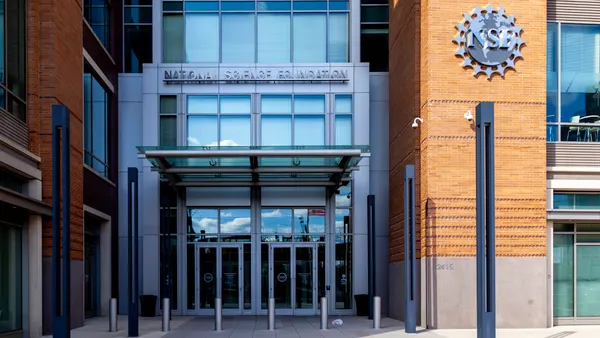Dive Brief:
- A new report highlights five key elements to successfully resolving a thorny and much-discussed issue that dogs colleges and universities: the reported misalignment of the skills employers need and the training colleges offer.
- The Education Commission of the States examined four states' efforts to develop workforce and postsecondary systems — Connecticut, Oregon, South Carolina and Texas. It identified common themes of data utilization, stakeholder coordination and collaboration, leaders committed to raising awareness around the issue, aligning curriculum with workforce needs, and access to federal and industry funding.
- So far this year, 32 states and the District of Columbia have introduced workforce development legislation, with 28 bills enacted across 17 states. Half of those efforts focused on financial incentives for students and institutions targeting high-demand fields.
Dive Insight:
With the decline in public funding to higher education and rising tuition, the question of whether colleges and universities are prioritizing the proper fields of study has become a prominent topic. Data has determined a skills gap exists, and several solutions have been recommended. But some argue the problem has been overstated.
Nearly half (46%) of U.S. employers say they're having trouble filling jobs due primarily to a lack of applicants and required skills among prospective employees, according to a recent report by global staffing firm ManpowerGroup. Companies with 250 or more employees reported the issue at an even higher rate (58%).
Meanwhile, data show that college students aren't entirely pleased with the prospects offered by a college degree. According to a 2017 Strada-Gallup survey, just one-third of college students "strongly agree" they will graduate with the skills and knowledge needed to be successful in the job market, and only about half believe their major will lead to a good job. The resulting report highlights six undergraduate experiences that lead to success in jobs and life.
A July 2017 report from Georgetown University's Center on Education and the Workforce highlighted five initiatives that can help align colleges and employers. Those include creating better structures for colleges to obtain accurate information about jobs and modify their offerings accordingly.
The center also highlighted the need for career path information throughout the K-12 pipeline. It highlights a platform from the Center for Employability Outcomes, an applied research center at Texas State Technical College, to align courses and postsecondary credentials with workforce needs. More than 26 colleges have used the platform to align 1,300 courses and 83 credentials, the report notes.
However, Chalkbeat reported that there is uncertainty amid the data. The story contends that "while there is good reason to think that America's job market will look different in the years to come" some of the data used to argue that schools aren't adequately preparing students is “overstated or misleading,” and that some economists believe the changes will be less dramatic than the data predict, with many current types of work continuing to persist.













